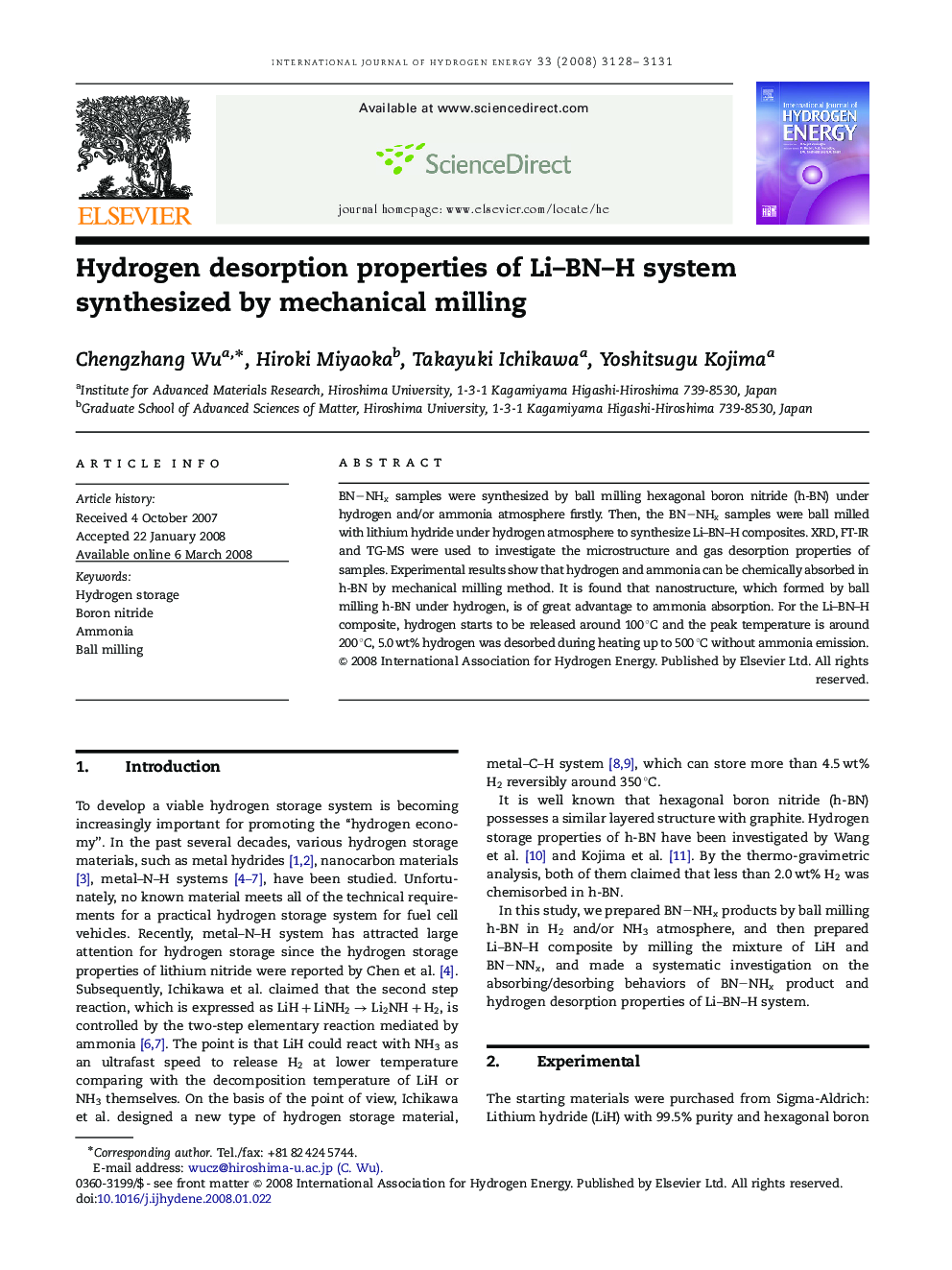| Article ID | Journal | Published Year | Pages | File Type |
|---|---|---|---|---|
| 1279615 | International Journal of Hydrogen Energy | 2008 | 4 Pages |
BN–NHxBN–NHx samples were synthesized by ball milling hexagonal boron nitride (h-BN) under hydrogen and/or ammonia atmosphere firstly. Then, the BN–NHxBN–NHx samples were ball milled with lithium hydride under hydrogen atmosphere to synthesize Li–BN–H composites. XRD, FT-IR and TG-MS were used to investigate the microstructure and gas desorption properties of samples. Experimental results show that hydrogen and ammonia can be chemically absorbed in h-BN by mechanical milling method. It is found that nanostructure, which formed by ball milling h-BN under hydrogen, is of great advantage to ammonia absorption. For the Li–BN–H composite, hydrogen starts to be released around 100 °C and the peak temperature is around 200 °C, 5.0 wt% hydrogen was desorbed during heating up to 500 °C without ammonia emission.
